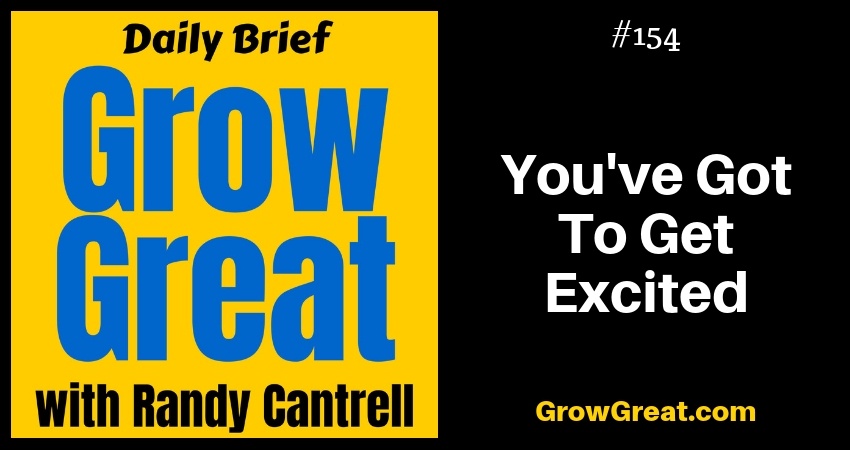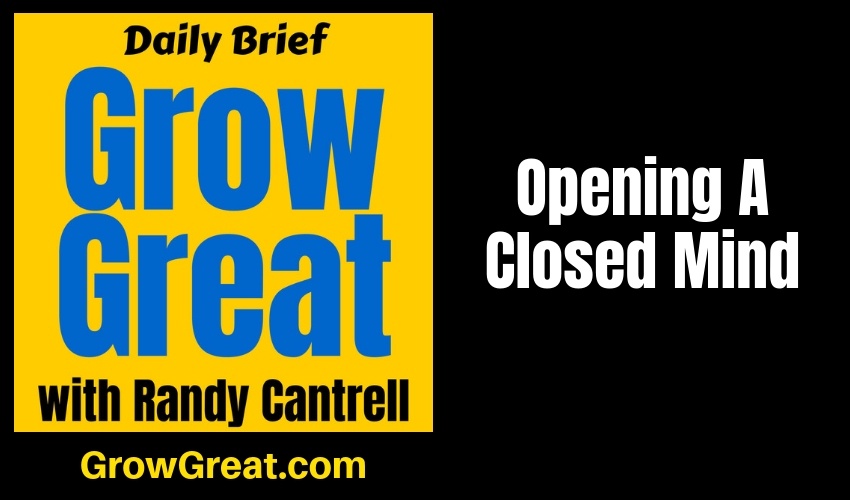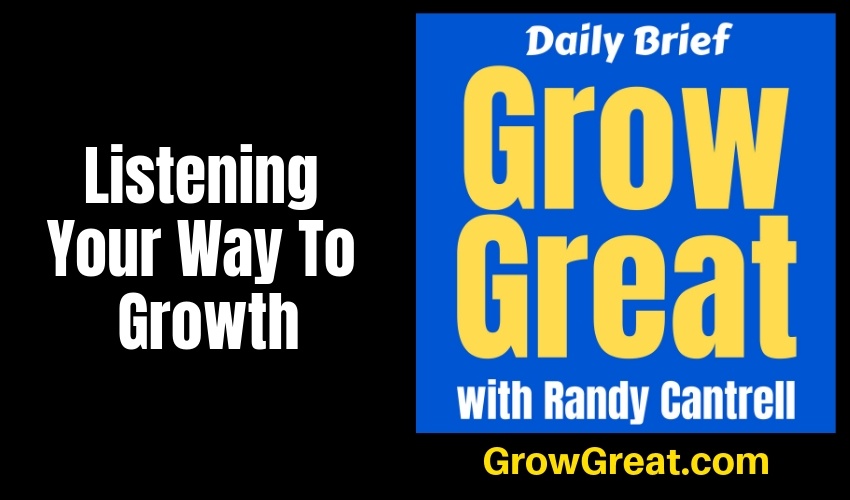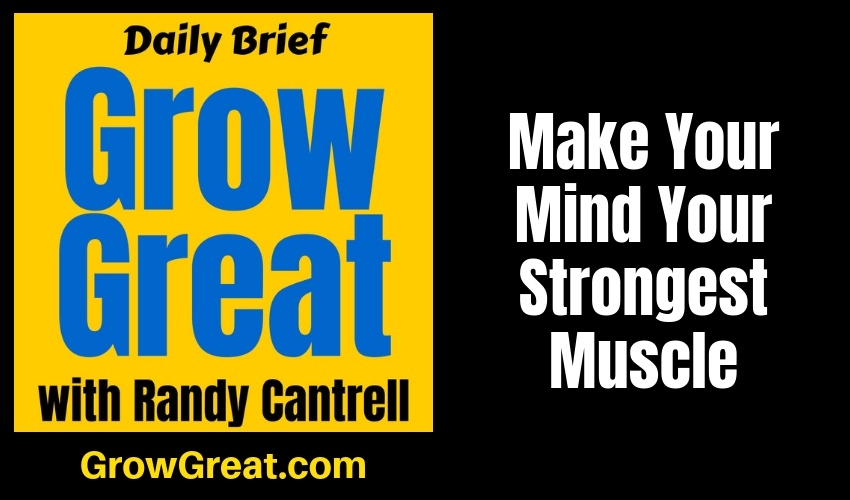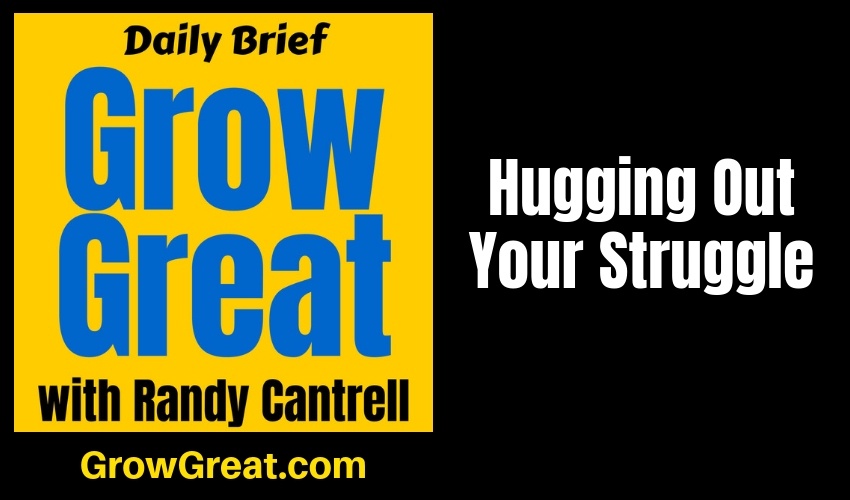You’ve Got To Get Excited – Grow Great Daily Brief #154 – February 19, 2019
Podcast: Play in new window | Download (Duration: 7:31 — 8.0MB)
Subscribe: Apple Podcasts | Spotify | RSS | More
“You’ve got to get excited. That’s how innovation happens.” – Stephen Sanger, CEO, General Mills
Enthusiasm is energy. Well, at least it’s one form of energy. A form of energy you’re going to need to reach new heights in your business (and in your leadership).
Somebody said to me, “You can’t manufacturer enthusiasm.” I didn’t argue, but I instantly thought, “Sure you can. You can likely manufacturer or fake just about anything.” But I don’t think he properly expressed the thought. Excitement and enthusiasm need to be authentic. Genuine.
Three grandkids are overtaking my kitchen one morning. I ask them about breakfast. “Who wants oatmeal?” I ask, knowing at least 2 of them (the boys) rather like oatmeal. Big sister pipes up, “I don’t like oatmeal. I want eggs.” Middle brother pipes up, “I don’t like eggs. I want oatmeal.” I ask little brother, “Do you want pecans in your oatmeal?” Before he can answer, big sister chimes in, “He doesn’t like pecans.” I fetch a pecan, give it to little brother and he scarfs it down, then says, “I want pecans.” This is a 3-ring circus. As usual when these beggars are at the house.
I have flour tortillas so I offer to make big sister a breakfast burrito. “I don’t want cheese in it,” she says. “What? You don’t cheese?” I ask. “I don’t like cheese with eggs,” she declares.
Siblings. None of are excited by the same things. Not even the same breakfast foods. Ask them why they like what they like, why they hate what they hate…and they’ll look at you like you’re crazy. They get excited about whatever they get excited about. They’re little kids so they don’t know how to fake anything. Yet.
Such is the case with genuine excitement versus manufactured excitement. True enthusiasm looks very different from fake. The results are different, too.
To go from here to there (from wherever you are to where you most want to be), you need to get excited. You need genuine, true excitement for the work. The goal should excite you. Not in some dreamy, wishful thinking sort of way, but in a way where you believe in it. Where you believe in yourself and your ability to accomplish it.
That’s why HOW is more important than people claim. Pundits declare that big thinkers and high achievers don’t focus on how. Rather, they focus on who can help them. Sounds good, but when you focus on who you’re leaning into how because at the heart of your who is “how can they help me?” I just don’t think how and who are so distinctly separate. And these two concepts – or truths – matter because they’re both required if we’re going to be truly enthusiastic about whatever it is we’re chasing.
How are these important? Because without them you’ll struggle to believe. Without belief, excitement will falter.
A person can get all amped up about some “get rich quick” scheme, but the enthusiasm fades once adversity hits. And adversity always does hit. Fake excitement over an imaged outcome. Sorta like hitting the lottery. Manufactured enthusiasm about something that could happen won’t last. How long can you stay excited about the prospect of winning the Publisher’s Clearing House contest? Not long.
Something else, too. Excitement over such things doesn’t provide any value. You’ve got to be excited about something that needs your purposeful, intentional action. In short, be excited about what you can do to alter the course of your future! That’ll pay off, even if you don’t quite hit the mark. The practice of putting in the work, fueled by the energy provided by your excitement, will create opportunities. You may not even see them all coming.
Confidence helps, too. As you put in the work, excited about getting this thing done, you’ll prepare. You’ll take action. That repetition – preparation followed by action – will provide you the learning you need.
Learning. Understanding. Growth. L.U.G.
Figuring it out gives you the leg up you need. Excitement’s role is enormous to keep you sustained when temporary failures knock you down. Context keeps you focused on knowing that the urgent task is to find out what will work for you. Everything is specific to YOU. Nobody else matters.
Be excited about what YOU can get done. Be excited about the work necessary to figure it out. Stay excited when something doesn’t work because it’s only temporary if you’ll strengthen your belief and increase your excitement. The ninnies will defeat you if you start listening to them. So don’t listen to them.
This is all about YOUR excitement. Your preparation. Your work. Your ability to figure it out. It’s your success.
“It’s hard to beat somebody when they don’t give up.” — Babe Ruth
Excitement can help keep you going.
Be well. Do good. Grow great!
RC
You’ve Got To Get Excited – Grow Great Daily Brief #154 – February 19, 2019 Read More »
